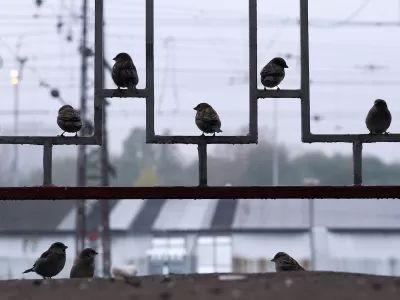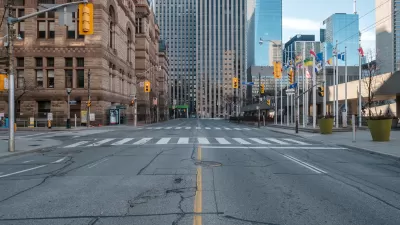Research shows higher levels of noise in formerly redlined neighborhoods, disrupting the health of both human and animal residents.

Writing in Streetsblog USA, Kea Wilson describes the results of a study of 83 U.S. cities that highlights the relationship between redlining and noise pollution.
“Today, formerly redlined areas are still predominantly Black, brown, or low-income, too, and they still experience an average maximum noise value of 89.8 decibels — a level which the Centers for Disease Control says can damage hearing after less than two hours of exposure, in addition to increasing stress, disturbing sleep, and provoking a host of other health problems.”
As environmental justice advocates know, formerly redlined neighborhoods also tend to experience higher rates of traffic violence, increased flood risk, more air pollution, and other environmental burdens.
The study expands the analysis to include urban wildlife. “Even setting the obvious threat of roadkill aside, the researchers found that noise levels commonly experienced in redlined neighborhoods can themselves wreak havoc on local animal populations, disturbing their feeding, mating, and migration behaviors and drastically decreasing their numbers over time.”
The study’s authors say cities should approach noise management through a more intersectional lens that helps policymakers understand the invisible impacts of noise and “explore a wide range of strategies, including reducing vehicle speeds, building ‘good old-fashioned physical barriers’ and sound walls around high-volume areas, and increasing border vegetation and tree lines, in addition to buzzier ‘smart’ approaches like noise-reducing asphalt.”
FULL STORY: Car Noise Pollution is Worse in Redlined Neighborhoods — And Not Just for Humans

Manufactured Crisis: Losing the Nation’s Largest Source of Unsubsidized Affordable Housing
Manufactured housing communities have long been an affordable housing option for millions of people living in the U.S., but that affordability is disappearing rapidly. How did we get here?

Americans May Be Stuck — But Why?
Americans are moving a lot less than they once did, and that is a problem. While Yoni Applebaum, in his highly-publicized article Stuck, gets the reasons badly wrong, it's still important to ask: why are we moving so much less than before?

Using Old Oil and Gas Wells for Green Energy Storage
Penn State researchers have found that repurposing abandoned oil and gas wells for geothermal-assisted compressed-air energy storage can boost efficiency, reduce environmental risks, and support clean energy and job transitions.

Updating LA’s Tree Rules Could Bring More Shade to Underserved Neighborhoods
A new USC study finds that relaxing Los Angeles’ outdated tree planting guidelines could significantly expand urban tree canopy and reduce shade disparities in lower-income neighborhoods, though infrastructure investments are also needed.

California's Canal Solar Projects Aim to Conserve Resources and Expand Clean Energy
California’s Project Nexus has begun generating electricity from solar panels installed over irrigation canals, with researchers and state agencies exploring statewide expansion to conserve water and boost clean energy production.

HHS Staff Cuts Gut Energy Assistance Program
The full staff of a federal program that distributes heating and cooling assistance for low-income families was laid off, jeopardizing the program’s operations.
Urban Design for Planners 1: Software Tools
This six-course series explores essential urban design concepts using open source software and equips planners with the tools they need to participate fully in the urban design process.
Planning for Universal Design
Learn the tools for implementing Universal Design in planning regulations.
Heyer Gruel & Associates PA
City of Moreno Valley
Institute for Housing and Urban Development Studies (IHS)
City of Grandview
Harvard GSD Executive Education
Salt Lake City
NYU Wagner Graduate School of Public Service
City of Cambridge, Maryland





























